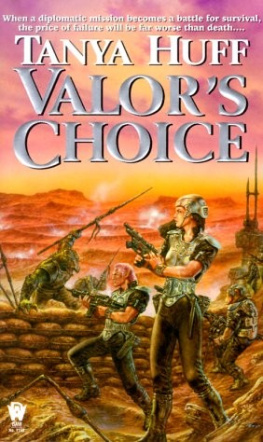This edition is published by ESCHENBURG PRESS www.pp-publishing.com
To join our mailing list for new titles or for issues with our books eschenburgpress@gmail.com
Or on Facebook
Text originally published in 1963 under the same title.
Eschenburg Press 2017, all rights reserved. No part of this publication may be reproduced, stored in a retrieval system or transmitted by any means, electrical, mechanical or otherwise without the written permission of the copyright holder.
Publishers Note
Although in most cases we have retained the Authors original spelling and grammar to authentically reproduce the work of the Author and the original intent of such material, some additional notes and clarifications have been added for the modern readers benefit.
We have also made every effort to include all maps and illustrations of the original edition the limitations of formatting do not allow of including larger maps, we will upload as many of these maps as possible.
ON VALORS SIDE
BY
T. GRADY GALLANT
DEDICATION
To my daughter, Lacy, and to my two sons, Thomas and Scott...and to my wife, Michael Ann...to all of whom this was in Olden Times, but for whom it was worth it.
On valors side the odds of combat lie,
The brave live glorious, or lamented die;
The wretch who trembles in the field of fame,
Meets death, and worse than death, eternal shame!
The Iliad: Book V
FOREWORD
The First Division, Fleet Marine Force, United States Marine Corps, was the first American fighting unit in World War II to launch a successful land assault against this nations enemies. The First Divisions invasion of the Solomon Islands, of which Guadalcanal is a part, took place on the morning of August 7, 1942. The action was a long, cruel holding operation fought with too little equipment and support, and too few men. There was not enough food and ammunition. For long periods, beginning at the very outset of the assault, the Japanese had domination of the vast sea surrounding the islands and the endless stretch of air above them.
During the course of the battle, which was to become one of the great landmarks in American armsand which for the Marines lasted through the middle of December 1942the Japanese brought to bear a variety of weapons seldom faced before in historyif everby ground troops of a single unit. Not only was the First Division bombed by large squadrons of high-flying aircraft during the daylight hours, the Marines were subjected to night bombing, to strafing by Japanese fighter planes, and to bombardment by battleships, cruisers, destroyers, submarines, and land artillery, in addition to attack by conventional tanks and infantry weapons day in and day out, night by night, during the almost five months they held the island before being relieved by Army units.
On many occasions, units of the Japanese Navy cruised in broad daylight to fire upon the Marines, and many times reinforcements to Japanese units were landed while the Americans looked on, helpless to prevent the operation. Sea battles between American and Japanese naval units were witnessed by troops ashore, submarines were sunk in daylight before their eyes, and they watched their own vessels attacked and destroyed by the enemy. Dogfights between aircraft were staged above their heads, and often planes crashed only a few yards away from their foxholes.
There was no rear area in the sense of a safe place on Guadalcanal, for the invasion force was for many weeks under a grim and relentless siege, cut off from effective help, eating captured Japanese supplies and smoking Japanese cigarettes. The Marines lived in holes in the ground, for the most part. Those who slept in tents had to run for bomb shelters at least once a night, and, sometimes, it was easier to sleep there than be constantly awakened by air-raid alarms.
By the time it was relieved by Army units, the First Marine Division held something of a record, up to that date, for number of days under continuous fire by the enemy.
August 7, 1962 was the twentieth anniversary of this battle: the Battle for Guadalcanal...the Battle for the Solomons. There have been a number of books published concerning the conflict. Some of them saw print during the war; indeed, at least one came out while the struggle for the Solomons was still in progress. The Marine Corps has published works which include the Solomons Battle, and an excellent book, The Old Breed , has been done on the recent history of the First Marine Division.
But I know of no work by anyonethough there quite well may be one or moreon the Guadalcanal operation by an enlisted man who participated from beginning to end. I know of no book that tries to record the fears, the little moments of triumph and joy, the battlefield and life and death upon it. This book is an attempt to do this; it makes no pretense of being a technical work, quite the contrary. Indeed, the technician has more than his share of literature. This book is about ordinary Marines doing the job for which they have always been trained: attacking the enemy and killing him. This book is not an account of personal heroics, for I am not a heroic person.
Though the Marines of the First Division did not know it at the time, they bridged the gap between World War I and World War II. In a way this was symbolized by the World War I equipment with which they fought. The lessons the First Division learned at Guadalcanal were applied at other fronts, often by members of the old First themselves.
This book, too, concerns itself with a war that was the last of its kindfor science has remade war into another and more terrible image. It speaks of a war that is as outmoded and ancient as any ever fought in the past, and of a battle that still could be easily compared with some fought during the American Civil War. This is a personal account, as true as I can make it, but subject to inaccuracies of memory even though that memory is supported by letters I wrote home from the battlefield and from other overseas areas, and clippings of articles and stories published in the United States while the battle was in progress. These letters and clippings were preserved for me by my mother, Louise Ralls Gallant, R.N., of Gadsden, Alabama, who has a sense of family history, and who felt her son was fighting the battle singlehanded.
Marines were not allowed to keep diaries or notes, and I kept none; thus, the records my mother preserved are of great value to me, and, I hope, will be to my children. But the experience of war does not require the combat Marine to need a diary to help him recall what he has seen and heard when life itself has become very, very precious to him...and when he truly believes its sands have run very low for him. Under such circumstances of great stress, of great doubts and fears, frights and moments of passion, the human mind is a sensitive and reliable instrument of memory. Most of the pages of this book are drawn from this prime source; it was the recorder that was there.
This book is as free of profanity as possible. Though the everyday language of the Corps is almost pure profanity, and the dialogue of battle is not that of the drawing room, I do not feel it necessary to write in this way to give you the true picture of battle. The horrors of modern battle are in themselves enough to revolt those of a normal mind without the addition of words and phrases that I would not be proud for my children to read. I am not a prude on this matter; no one who has served more than four years in the Marine Corps is a prude. But I think there have been ample numbers of books dealing with the sex life of the military, which, as many know, differs little from that of the home front. And there have been uncounted volumes dealing with shore leave, bars, and bedrooms, and the dramatic experiences therein. However, the war was not fought in these places.












